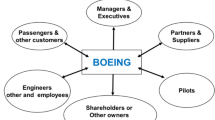Abstract
In 1989, the Navy Personnel Research and Development Center (NPRDC) developed a service-wide survey to assess the equal opportunity climate of the Navy. This survey, known as the Navy Equal Opportunity/Sexual Harassment Survey (NEOSH), is administered to a random sample of Navy women and men every two years. Each year the survey has been administered, results have indicated that African American women are the least satisfied with the equal opportunity climate of the Navy than any of the other aggregated groups. In an effort to explain and expand upon the findings of the NEOSH, NPRDC organized a group of facilitators in 1995 to conduct focus groups of African American Navy women. The present study is based on data from these focus groups.
The women in this study exemplify what some researchers refer to as the “double whammy” phenomenon: disadvantaged because of both their race and gender. The data also lend support to theories of tokenism. An interesting finding is that regard-less of how dissatisfied the African American women were about the equal opportunity climate in the Navy, they still viewed job opportunities to be better in the Navy than in the civilian sector. Recommendations from focus group participants for improving the Navy EO climate are presented.
Similar content being viewed by others
References
Campbell, D'Ann. 1984. Women at War with America: Private Lives in a Patriotic Era. Cambridge: Harvard University Press.
Cose, Ellis. 1993. The Rage of a Privileged Class. New York: Harper Collins.
Daniels, Kathleen B. 1994. Social Construction of Race and Gender: Black Women Officers in the U.S. Navy. Unpublished Master's thesis. Monterey, CA: Naval Postgraduate School.
Dansby, Mickey R. 1997. “One Size No Longer Fits All.” Reflections. 12(1):15.
Dansby, Mickey R. and Dan Landis (in press). “Race, Gender, and Representation Index as Predictors of Equal Opportunity Climate in Military Organization.” Journal of Military Psychology. 10(2):37–105.
DeFour, Darlene. 1990. “The Interface of Racism and Sexism on College Campuses.” in Ivory Power: Sexual Harassment on Campus. ed. M. Paludi. Albany: State University of New York Press.
Dreher, George and Taylor Cox. 1996. “Race, Gender, and Opportunity: A Study of Compensation Attainment and the Establishment of Mentoring Relationships.” Journal of Applied Psychology 81(3):297–308.
Earley, Charity A. 1989. One Woman's Army: A Black Officer Remembers the WAC. College Station: Texas A&M University Press.
Essed, Phiolmena. 1991. Understanding Everyday Racism: An Interdisciplinary Theory. Newbury Park, CA: Sage.
Firestone, Juanita. 1992. “Occupational Segregation: Comparing the Civilian and Military Work Force.” Armed Forces & Society 18(3):363–381.
Greene, Beverly. 1994. “African American Women.” Women of Color: Integrating Ethnic and Gender Identities in Psychotherapy, ed. Lillian Comas-Diaz and Beverly Greene. New York: The Guilford Press.
Horton, Mildred McAfee. 1971. “Recollections of Captain Mildred McAfee, USNR (Ret.).” In WAVES Officers of World War II, vol. 1. Annapolis: U.S. Naval Institute.
Ibarra, Hermina. 1995. “Race, Opportunity, and Diversity of Social Circles in Managerial Networks.” Academy of Management Journal 38(3):673–703.
Jet. 1997. “Survey Reveals Black Women are the Least Happy Americans.” April 14:14–16.
Johnson, Jesse. 1974. Black Women in the Armed Forces: 1942–1974. Hampton, VA: Author.
Kanter, Rosabeth Moss. 1977. Men and Women of the Corporation. New York: Basic Books.
Kram, Kathy and Lynn Isabella. 1985. “Mentoring Alternatives: The Role of Peer Relationships in Career Development.” Academy of Management Journal, 28(1) 110–132.
Miller, Richard E. 1995. “The Golden Fourteen, Plus: Black Navy Women in World War One.” Minerva: A Quarterly Report on Women and the Military 8(3&4):7–13.
Moore, Brenda L. 1996. To Serve My Country, To Serve My Race: The Story of the Only African American WACs Stationed Overseas during World War II. New York: New York University Press.
— 1991a. “African American Women in the U.S. Military.” Armed Forces and Society 17(3): 363–384.
— 1991b. “Issues of Black Women in the United States Navy: Preliminary Findings.” San Diego: Navy Personnel Research and Development Center.
Nelson, Dennis. 1948. The Integration of the Negro into the United States Navy, 1776–1947. Washington, D.C.: Navy Department.
Putney, Martha S. 1992. When the Nation Was in Need: Blacks in the Women's Army Corps during World War II. Metuchen, NJ: Scarecrow Press.
Rosenfeld, Paul, Amy Culbertson, Stephanie Booth-Kewley, Paul Magnusson. 1992. “Assessment of Equal Opportunity Climate: Results of the 1989 Navy-Wide Survey.” San Diego: Navy Personnel Research and Development Center.
Webb, Schuyler C. 1994. Role Conflict Among African American Female Navy Officers. Unpublished dissertation manuscript. United States International University, San Diego, CA.
Author information
Authors and Affiliations
Additional information
She received her Ph.D. from the University of Chicago in 1987. She served in the U.S. Army for six years, and also serves on the Defense Advisory Committee on Women in the Services, the councils of the Inter-University Seminar on Armed Forces and Society, and the Peace and War Section of the American Sociological Association. Among her publications is a book titled, To Serve My Country, To Serve My Race: The Story of the Only African American WACs Stationed Overseas During World War II, New York University Press, 1996.
He earned his doctoral degree in Industrial/Organizational Psychology from the United States International University. During his naval career, he has written numerous articles and technical reports on equal opportunity, sexual harassment, race relations, and quality of life issues.
Rights and permissions
About this article
Cite this article
Moore, B.L., Webb, S.C. Equal opportunity in the U.S. Navy: perceptions of active-duty African American women. Gend. Issues 16, 99–119 (1998). https://doi.org/10.1007/s12147-998-0024-y
Issue Date:
DOI: https://doi.org/10.1007/s12147-998-0024-y



